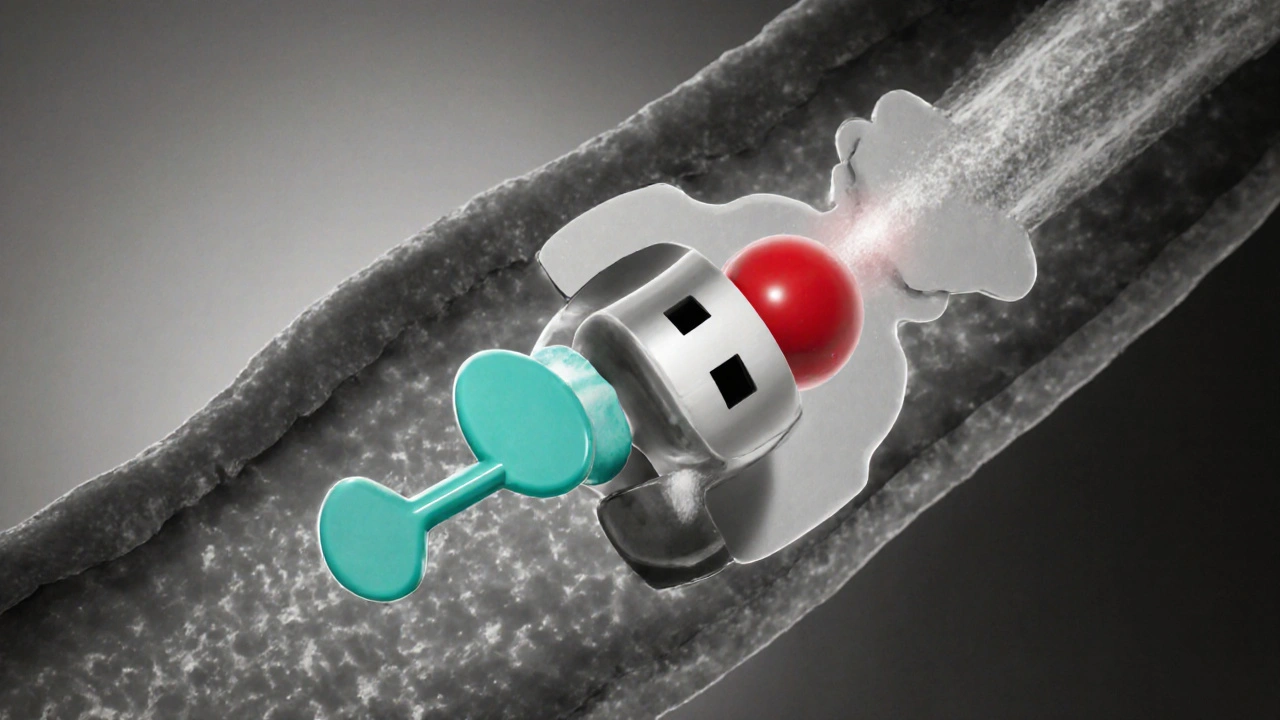Antihistamine: How It Works, What to Watch For, and When to Use It
When dealing with a Antihistamine, a medication that blocks the action of histamine to relieve allergy symptoms. Also known as histamine blocker, it is a core tool for anyone battling sneezing, itching, or watery eyes. In the same breath, you’ll hear about Allergy, the immune response that triggers histamine release, the Histamine, a chemical that causes blood vessels to widen and nerves to itch, and the H1 receptor blocker, the class of drugs that sit on H1 receptors and prevent histamine binding. Together, these concepts explain why a simple pill can calm a runny nose and let you sleep through pollen season.
The relationship between these entities is clear: antihistamine encompasses H1 receptor blockers, which target the histamine released during an allergy attack. This chain—allergy triggers histamine, histamine binds H1 receptors, H1 receptor blockers step in—forms the backbone of allergy relief. Understanding this chain helps you pick the right product, avoid unwanted drowsiness, and know when a prescription might be needed instead of an over‑the‑counter option.
Key Concepts and Practical Considerations
First, not all antihistamines are created equal. First‑generation agents like diphenhydramine cross the blood‑brain barrier, often causing sedation and dry mouth. Second‑generation drugs such as cetirizine, loratadine, and fexofenadine stay mostly out of the brain, so you stay alert while symptoms subside. The choice between generations influences two major attributes: sedation level and duration of action. If you need night‑time relief, a first‑gen drug might be fine; for daytime use at work or school, a second‑gen option generally works better.
Second, dosage matters. Adults typically take 10 mg of cetirizine once daily, while kids may need weight‑based dosing. Over‑dosing won’t speed relief; it just raises the risk of side effects like headache or heart palpitations. Always read the label or ask a pharmacist for the exact amount your age and weight require.
Third, drug interactions can sneak up on you. Antihistamines may amplify the sleepy effect of alcohol, certain antidepressants, or muscle relaxers. They can also affect how the body processes other meds through the cytochrome P450 system. If you’re on blood thinners, anti‑asthma inhalers, or migraine treatments, a quick chat with your doctor can prevent surprises.
Fourth, special populations need extra care. Seniors are more prone to sedation and confusion from first‑gen agents, so clinicians usually start with a low‑dose second‑gen drug. Pregnant or breastfeeding women should stick to antihistamines that are classified as safe by the FDA, like loratadine, and avoid those without clear safety data.
Finally, remember that antihistamines treat symptoms, not the root cause. If you notice persistent congestion, a sinus infection, or worsening eczema, an antihistamine alone won’t fix the problem. Combining it with nasal steroids, eye drops, or allergen avoidance strategies gives a more complete solution.
Below you’ll find a curated set of articles that dive deeper into each of these angles—whether you’re curious about the best over‑the‑counter pick, need a step‑by‑step taper guide for a specific drug, or want to understand how antihistamines interact with other treatments. The collection is designed to give you practical answers you can apply right away, no jargon, no fluff.
Ready to explore the full range of guidance? Scroll down to discover detailed guides, safety tips, and expert advice that will help you make confident decisions about antihistamine use.
Levocetirizine Explained: How This Antihistamine Relieves Allergies
- Laura Ledas
- Sep, 13 2025
Learn how levocetirizine works, its benefits, dosing tips, and how it compares to other antihistamines for effective allergy relief.
Learn More